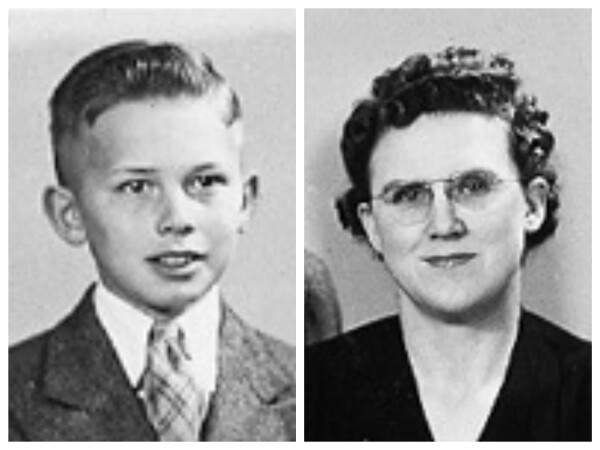The following is an excerpt from Elder Dallin H. Oaks' book Life's Lessons Learned.
The most significant academic talks I heard during my service at Brigham Young University had one common characteristic. Instead of providing new facts or advocating a particular position, as many lectures do, the most significant talks introduced ideas that changed the listeners’ ways of thinking.
The most powerful ideas that have influenced my life are those that helped me identify myself and the purpose of my life. Learned in childhood and early youth, these powerful ideas include “I am a child of a loving Heavenly Father,” “I lived as a spirit before I was born on earth, and I will live again as a resurrected being after death,” “my Savior, Jesus Christ, saves me from death and sin,” and “our family can be together forever.”
The temple and its teachings are at the center of all these powerful ideas. In a Christmas memory I wrote for the Church News, I described an early lesson on this subject:
“As a 12-year-old deacon, I was pleased to accompany the bishop to deliver Christmas baskets to the widows of our ward in Vernal, Utah. The backseat of his car was filled with baskets of grapefruit and oranges. This was during World War II, when grapefruit and oranges were scarce, so they were quite a treat. He waited in the car while I took a basket to each door and said, ‘The bishop asked me to give you this Christmas basket from the ward.’
“When we had delivered all the baskets but one, the bishop drove me home. There he handed me the last basket and said, ‘This is for your mother.’ Before I could reply, he drove away. . . .
“I stood in front of our house, snowflakes falling on my face, holding the basket and wondering. We had been delivering baskets to widows, but I had never thought of my mother as a widow. I had never heard her refer to herself as a widow. I wondered why anyone would think my mother was a widow.
“That Christmas experience was formative in my understanding of the eternal family and in my appreciation for the faith of my mother. She always taught us that we had a father and she had a husband and that we would always be a family because of their temple marriage.”1
I have been blessed with other powerful ideas about the temple. When I went for the first renewal of my temple recommend, my bishop, Chauncey C. Riddle (a professor at BYU), taught me this principle. “Everything that occurs in the temple fits into one of three categories,” he said, “(1) teachings, (2) covenants, and (3) promised blessings.” That wonderful teaching to a young married man was a powerful idea that permanently guided my thinking about the temple experience we call the endowment.
Many years later I read another powerful idea about the covenant parts of the temple experience. Dr. John A. Widtsoe, then a professor and later a member of the Quorum of the Twelve Apostles, spoke these words in a 1920 lecture in the Assembly Hall on Temple Square:
“Many young people object to temple work because, ‘We must make covenants and promises, and we do not like to be tied; we want full freedom.’ This objection arises from a misunderstanding of the meaning of covenants. Knowledge becomes serviceable only when it is used; the covenant made in the temple, or elsewhere, if of the right kind, is merely a promise to give life to knowledge by making knowledge useful and helpful in man’s daily progress. Temple work, or any other work, would have no meaning unless accompanied with covenants. It would consist simply of bits of information for ornament; the covenant gives life to truth; and makes possible the blessings that reward all those who use knowledge properly.”2
Putting that idea with the teaching of my bishop, I learned to think of the temple ceremony in these three parts: (1) we are taught, (2) we make covenants about how we will use the knowledge and other gifts God has given us, and (3) we are promised blessings if we do so. These powerful ideas have enriched my personal life and influenced my teaching of others.
Powerful ideas, such as those taught in the temple, change our thinking and our actions.
____________________
1.. “Christmas Memory,” Church News, December 11, 2010.
2. John A. Widtsoe, “Temple Worship,” Utah Genealogical and Historical Magazine 12 (1921): 61.
“I have learned things that have shaped my life and teachings, including some things of the heart not previously shared,” writes Elder Dallin H. Oaks in the introduction to this unique book. “This is an autobiography of learning and application rather than a compendium of doctrine.”
Masterfully blending personal experiences with the doctrines of the gospel, Elder Oaks invites us to join him on a journey through some of the turning points in his life and the lessons he has learned through a lifetime of devotion to the Savior.
The short but potent chapters offer perceptive observations into such diverse topics as the purpose of adversity, the importance of respecting those with whom we disagree personally or politically, the merits and limitations of law, the blessings of tithing, the seeming conflict between science and religion, the Lord's use of imperfect people to further His work, and the power of the Atonement to recover those who have fallen behind.
Elder Oaks also relates the very personal lessons he learned from the death of his wife, June, and from his subsequent marriage to Kristen McMain.
Woven throughout the book is Elder Oak's powerful testimony of the Savior and His mission. Life's Lessons Learned is a rare glimpse into the experiences of the heart that have shaped the life of an Apostle of God.

